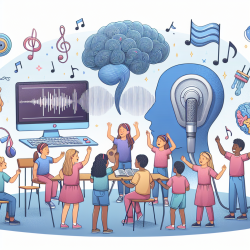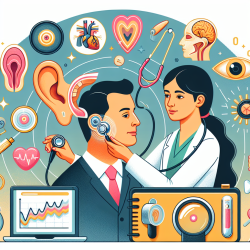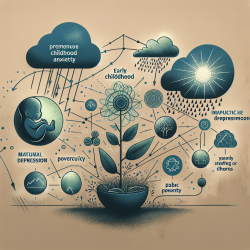As a practitioner dedicated to improving outcomes for children with cochlear implants (CIs), staying abreast of the latest research is crucial. One particularly compelling study, "Interplay between singing and cortical processing of music: a longitudinal study in children with cochlear implants," provides valuable insights into how singing can enhance auditory perception and attention in these children.
The study, conducted by Torppa et al. (2014), explored the development of music-related sound change detection in children with CIs and normal hearing (NH) aged 4–13 years. Using auditory event-related potentials (ERPs), the researchers recorded the children's responses to changes in piano tone pitch, timbre, duration, and gaps over two sessions, 14–17 months apart.
Key findings include:
- Children with CIs had smaller and later timbre P3a and later pitch P3a responses compared to their NH peers, indicating degraded discrimination and attention shift.
- Duration mismatch negativity (MMN) responses became larger over time only in the NH group.
- Importantly, CI children who engaged in regular singing (CI singers) exhibited enhanced or rapidly developing P3a or P3a-like responses across all change types.
These results underscore the potential of singing to augment neural networks for attention and improve auditory discrimination in children with CIs. Here are some actionable steps practitioners can take based on this research:
1. Incorporate Singing into Therapy Sessions
Regular singing activities can be integrated into speech and language therapy sessions. Singing not only engages children but also provides multisensory stimulation, which can enhance attention and auditory processing. Simple songs with repetitive melodies and rhythms can be particularly effective.
2. Encourage Singing at Home
Parents should be encouraged to sing with their children regularly. The study found that CI singers who sang at home showed significant improvements in auditory attention and perception. Providing parents with a list of recommended songs and singing activities can facilitate this.
3. Monitor Progress with Objective Measures
Utilize tools like ERPs to monitor changes in auditory processing and attention over time. Objective measures can provide valuable feedback on the effectiveness of singing interventions and help tailor therapy to individual needs.
4. Advocate for Music Education in Schools
Advocating for music education programs that include singing can benefit children with CIs. Schools can play a pivotal role in providing consistent and structured musical experiences that support auditory development.
In conclusion, the study by Torppa et al. (2014) highlights the significant benefits of incorporating singing into the therapeutic and daily routines of children with CIs. By leveraging these findings, practitioners can make data-driven decisions to enhance auditory outcomes and overall quality of life for these children.
To read the original research paper, please follow this link: Interplay between singing and cortical processing of music: a longitudinal study in children with cochlear implants.










